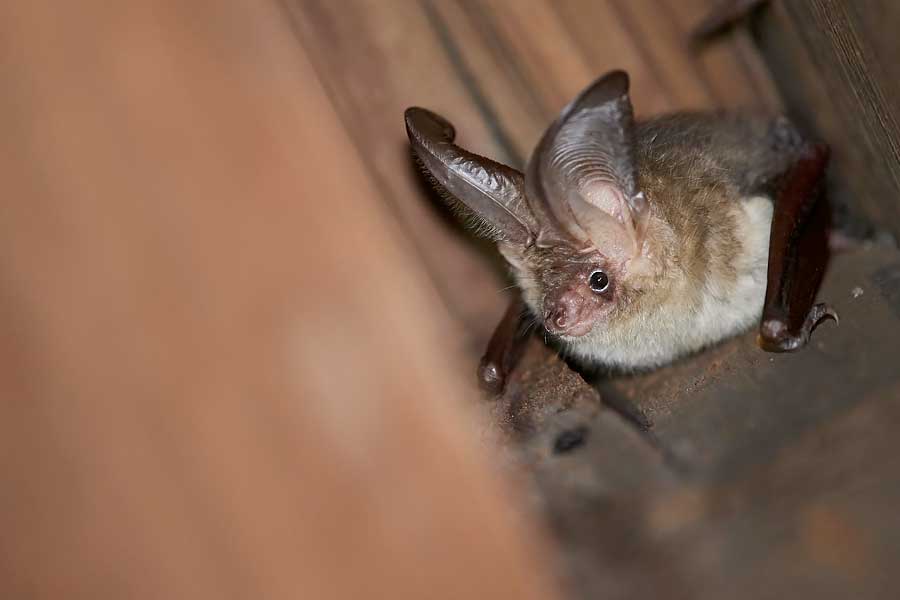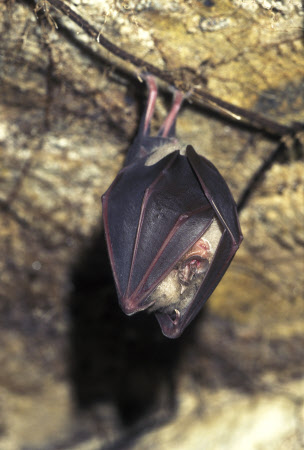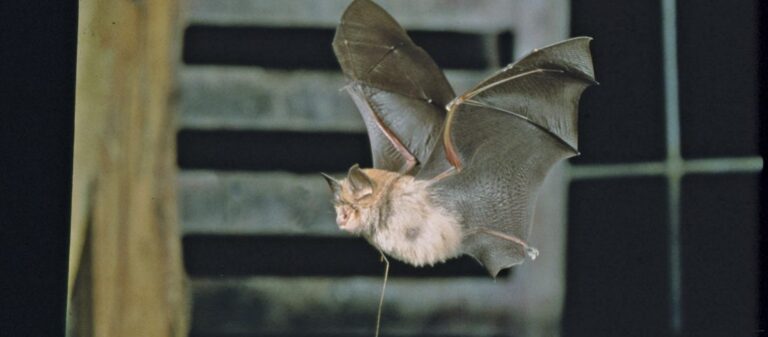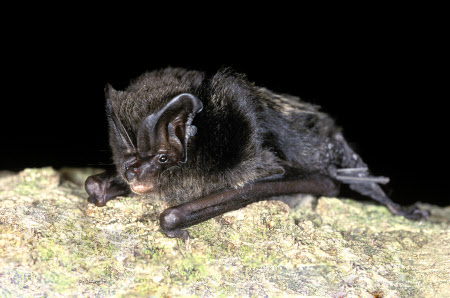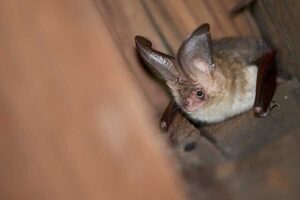Devon’s diverse range of habitatsThe natural environment in which an animal, plant or other o... More, connected by watercourses and hedges, provides excellent bat habitatThe natural environment in which an animal, plant or other o... More. All breeding British bats are found here other than the Alcathoe bat (Myotis alcathoe).
All species need roosts for shelter, insect-rich habitats for feeding and dark linear features, which many bats follow when flying between roosts and feeding areas. See the drop downs below for more information.
Seven species of bats are listed as Devon Species of Conservation Concern: lesser horseshoe, greater horseshoe, Bechstein’s, barbastelle, serotine, grey-long eared and noctule. All, other than noctule, are also identified as Focus Species that need specific action or attention. Devon is a stronghold for greater horseshoes, lesser horseshoes and grey long-eared bats which are listed as Devon Special SpeciesLorem ipsum dolor sit amet consectetur adipiscing..
All British bats are UK priority species and are legally protected.
All Devon’s bats need safe, dry roosts where they can rest, feed, sleep, raise their young and hibernate. Roosts can include holes in trees and structures such as caves, mines and buildings. However different types of roost are used by different species. For instance, Bechstein’s and barbastelle largely roost in trees whilst lesser and greater horseshoes generally don’t use trees or bat boxes, preferring large roof spaces and caves. Many species don’t adapt well to new roosts, or changes to roosts, and so it’s vitally important to look after them.
Bats use different roosts for different activities. Summer maternity roosts are the largest as females gather together to give birth and raise their young. Males and non-breeding females often roost alone in summer, although will sometimes share roost spaces, including with other bat species. Most bats tuck themselves into tiny crevices whilst horseshoes can be seen hanging upside down.
All Devon’s bats feed on flying insects, generally within a few kilometres of their roosts, although some, such as barbastelle, will travel further to forage. All need a patchwork landscape with a range of insect-rich habitats which they can use at different times of the year. All insect-rich habitats are important (including wetlands, field margins, species-rich meadows, broadleaved woodlands, wet woodlands, hedgerows, well vegetated watercourse corridors, parks and gardens) but again some species will prefer certain habitats. Daubenton’s bats are generally seen feeding over water whilst Bechstein’s largely forage in woodlands.
All bats need their roosts and feeding habitat to be connected by dark linear features such as hedges, woodland edges, rivers and streams. They use echolocation to navigate around the countryside, communicate and hunt for insects.
Most bats are sensitive to light and avoid lit areas. However, a few species, particularly pipistrelles, noctule and serotine, are less sensitive and will feed under streetlights which attract insects such as moths.

